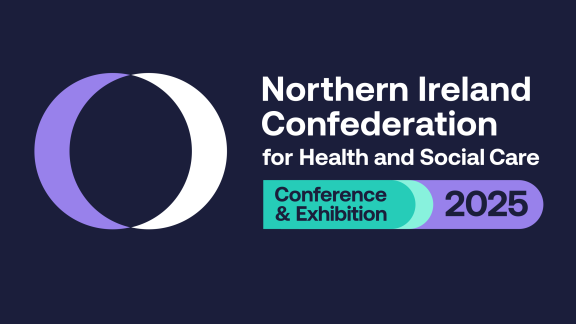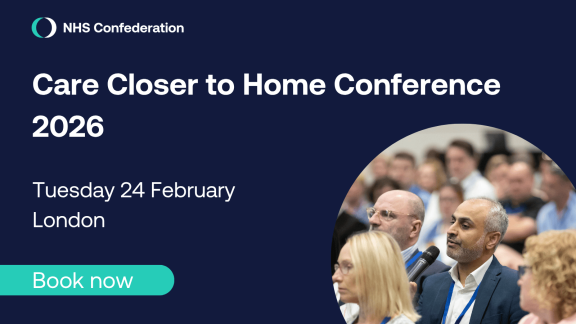People to Partners: Developing a unique approach for Northern Ireland

Developed in partnership with the Patient Client Council (PCC), this report explores the collaborative advantage of a new relationship with the public in delivering public sector goals in Northern Ireland.
Considered through the lens of health and collective wellbeing, it is designed to prompt thinking and to set out the potential gains for Northern Ireland and the wider public sector, whilst drawing on existing evidence and opportunity.
Key recommendations
- Establish an NI-specific, collaborative, cross government strategic framework: Develop a framework that establishes principles to adopt a ‘do with’ asset-based partnership approach and to guide change, focusing on shifting mindsets and system/organisational culture rather than replicating existing models
- Support and build on ‘This is Health’: Support and maximise the potential gained from applying a behavioural science and design methodology to change the mindset of the HSC to work with people as partners and to change the relationship that people in NI have with their own health
- Quantify the impact of community initiatives to public services: Explore a mechanism for quantifying the impact of community development and engagement/CVS activity, in order to understand the potential social value and savings to public services, and seek to strategically build on this work
- Build our evidence base and support for shared learning: Establish an evidence bank of initiatives in NI and beyond that work on the basis of asset-based partnership approaches which demonstrate deep understanding, versatile responses and collaborative delivery, and explore scalability and shared learning
- Foster interdepartmental collaboration: Encourage collaboration among various government departments (particularly those concerned with wider social, economic and environmental factors) to align policies and initiatives that collectively support the goal of improving public wellbeing
- Listen, reflect and do: Strengthen and align robust channels for citizen feedback to ensure triangulation of information and insights for continuous improvement of services based on community input and experiences. Review progress across health care and all Government departments to promote transparency and accountability on this agenda, adjusting approaches based on learning in the specific NI context
- Promote integrated care as part of a wider approach to wellbeing: Advocate for holistic care approaches (including a focus on ‘place’ or potentially through ‘neighbourhoods’) that connect health services with social, economic, and environmental factors, ensuring a comprehensive strategy for wellbeing.
- Encourage citizen activation through education and resources: Create initiatives, including maximising the potential of digital infrastructure, to understand people’s circumstances (particularly those who experience greatest health inequalities) and promote access to information, choice and control
- Embed citizen-centred design methods: Ensure engagement translates into tangible policy, service and system improvement
Background and objectives
On 3 September 2025, senior leaders from across Northern Ireland’s Health and Social Care (HSC) system, along with thought leaders, representatives from local government, the Community and Voluntary Sector (C&VS) and leaders from wider Northern Ireland (NI) Government Departments came together for a roundtable discussion to explore the potential collaborative advantage of a new relationship with the public in delivering public sector goals.
This discussion was framed by an acknowledgement of the urgent need to create sustainable and effective public services that meet contemporary demands and expectations. It recognised the growing body of evidence which suggests that harnessing the energy and agency of citizens as assets in resetting and reshaping public services, will deliver the best outcomes for governments and the public alike.
The objectives for this roundtable were to:
- Set the context in general around the concept of 'People as Partners', and building a new relationship with the public to drive wellbeing
- Discuss the case for change, and the potential benefits that this would bring
- Identify opportunities in the health sector and across wider government to drive wellbeing
- Discuss a strategic approach to taking this agenda forward in NI.
Context
In the context of health and social care, there is an urgent need to redefine the social contract to create a sustainable and effective system, within wider public services, that meets contemporary demands and expectations. With this in mind, the principle of harnessing the energy and agency of citizens as assets in resetting and reshaping public services for the future has been gaining traction, particularly in health and social care. Recent insights from organisations like the King’s Fund highlight the benefits of fostering improved public agency, which includes more effective policies, and increased trust in institutions. In England, the NHS 10 Year Plan advocates for a redistribution of power, promoting partnerships that leverage community resources and expertise. Alongside this, the recently published Reset Plan by the Department of Health in NI and the ‘This is Health’ initiative further explores this collaborative approach, recognising that health interventions are interconnected with broader public services aimed at enhancing overall wellbeing. This shift towards a citizen-centred model and improving population health more generally are also outlined within NI’s Programme for Government, which is underpinned by a Wellbeing Framework.
Carnegie UK's 2024 report on Northern Ireland's collective wellbeing highlights a picture of stagnant wellbeing, yet it also reveals significant opportunities for transformative policies and governance. Emphasising a cross-governmental ‘do with’ approach, which fosters asset-based partnerships between citizens and services, the report suggests this strategy could effectively tackle the challenges of improving collective wellbeing and achieving the NI Executive's goals. Key elements of this approach include collaborating closely with communities, gaining a deep understanding of the people within them, their perspectives and expectations and developing versatile responses tailored to individual needs.
Exploring the opportunities for Northern Ireland
Noting the current policy and societal context, participants considered the case for change in the context of opportunities in Northern Ireland.
Opportunities across wider government
Discussion on opportunities to be maximised and explored across government included:
Opportunities within health and social care
In the context of health and social care, participants recognised the potential application of these opportunities in the following:
Collaborative advantages of a strategic approach
Building upon both the opportunities to be explored within the health sector and more widely across government, three collaborative advantages of developing a new relationship with the public to drive wellbeing and citizenship were identified. These advantages would require further consideration and development in order to be realised in NI.



